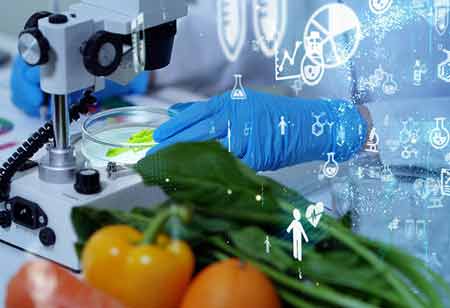Thank you for Subscribing to Agri Business Review Weekly Brief
Impaction of Hydroponics on Agriculture
A hydroponic vegetable garden provides many advantages.

By
Agri Business Review | Wednesday, March 16, 2022
Stay ahead of the industry with exclusive feature stories on the top companies, expert insights and the latest news delivered straight to your inbox. Subscribe today.
A hydroponic farm's primary concept is to use water in place of soil.
FREMONT, CA: A hydroponic vegetable garden provides many advantages. They can support solving problems without excessive space or water use, produce high-nutrient vegetables, and produce vegetables faster than traditional growing methods. Therefore, it seems inevitable that this farming method will become a primary source of fruits and vegetables.
Some of the advantages are as follows.
Space Maximisation
Hydroponics needs less space than soil-grown plants. Depending on the system, when uniting hydroponics with vertical farming techniques, they can utilize up to 99% less land than ordinary farming techniques. The smaller footprint of hydroponic plants doesn't spread to search for nutrients and moisture. Rather, water and nutrients are delivered directly, intermittently, or constantly, relying on the hydroponic technique. Each plant's root system adapts far less space to grow more plants in a smaller space. When adding to vertical stacking techniques, it's easy to view how much smaller area is required to make a hydroponic garden than a conventional one.
Enables micro-climate
Can store Hydroponic gardens within a greenhouse or other structure. It means they can have their micro-climates secluded from the difficulties traditional farmers have to deal with. In addition, plants can be grown year-round in temperature-controlled facilities. And artificial growing lights are no problem.
Makes higher yields
Making ideal conditions makes sure that plants receive the perfect amount of nutrients in direct contact with roots. Besides, microclimates enable year-round growth and faster crop cycles. As a result, our hydroponic greenhouses can yield about 240 times more than other farming practices.
Require less work
Hydroponics offers a lighter worker load and can be easily managed with fewer person-hours without tilling, weeding, herbicide and insecticide application, and other labor-intensive farm jobs. As a result, it reduces crop costs and frees up time for other pursuits. Indeed, one single part-time worker can fully manage a small hydroponic greenhouse.
Minimizes Supply Chain
Hydroponics can cut heavy energy use. Can be built Hydroponic greenhouses in neighborhoods where traditional farms cannot thrive. They can meet their local communities' needs without wasteful transportation and questionable preservation processes. Easing the food chain means that high-quality products can be grown locally and then distributed to the community with less waste and more freshness.





